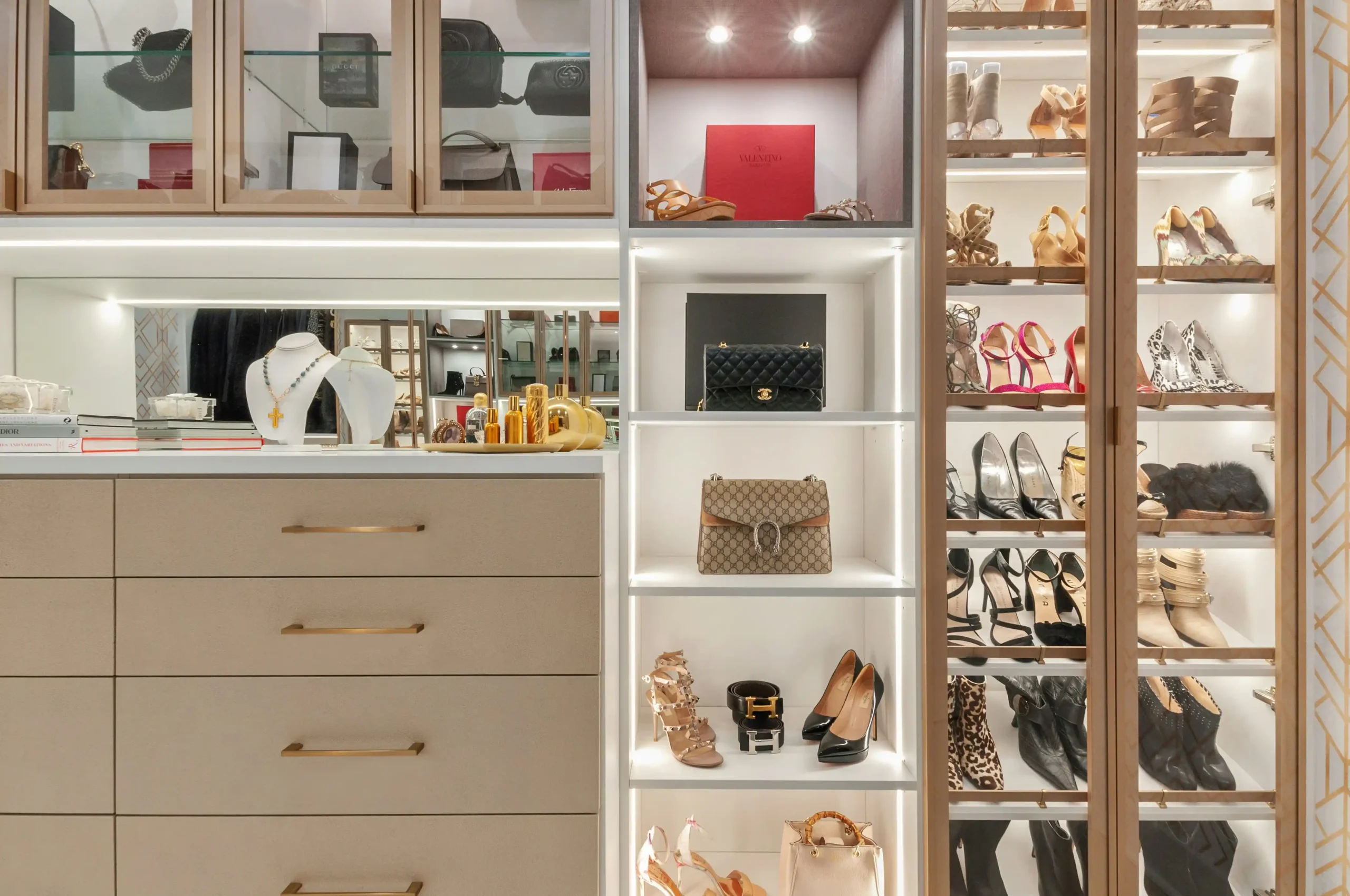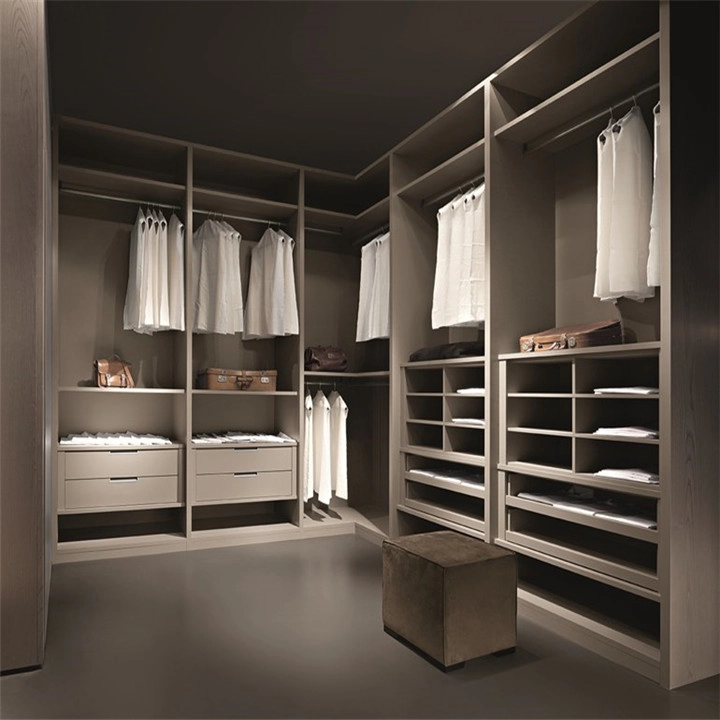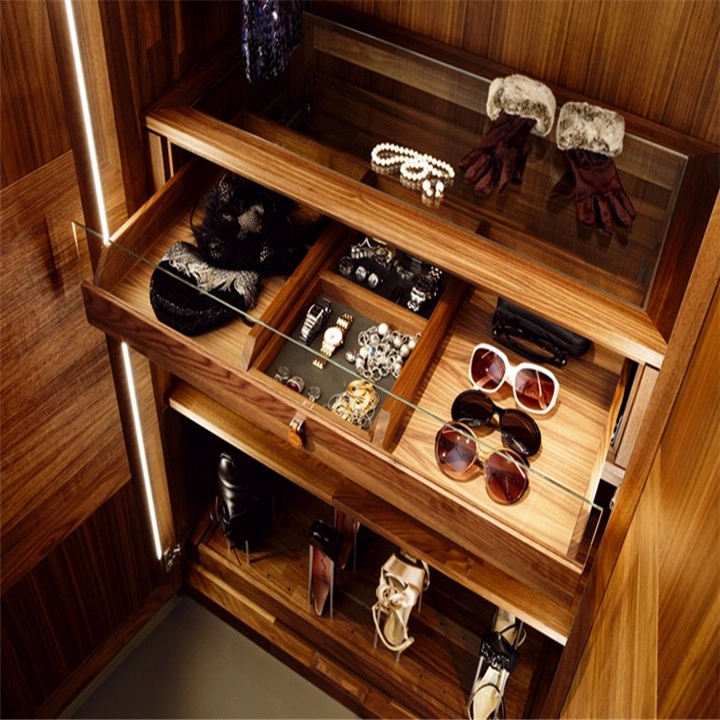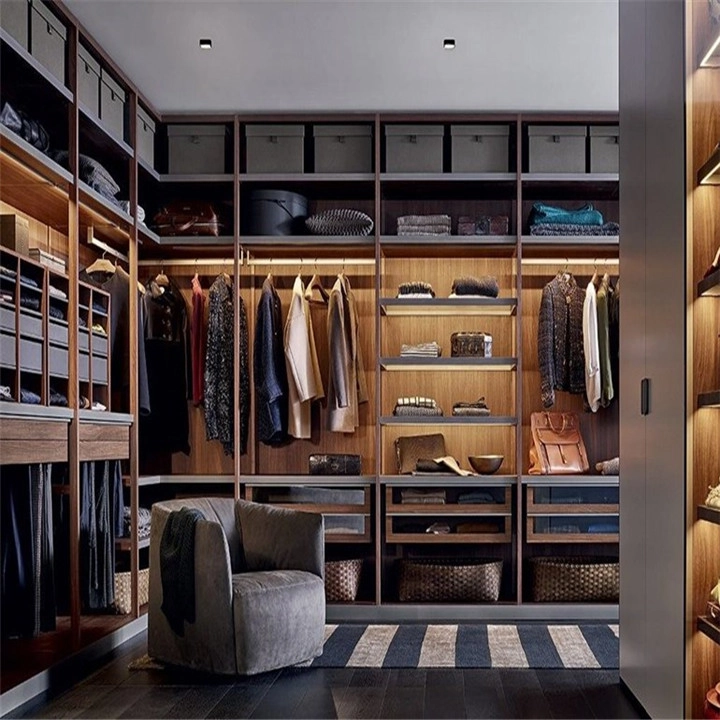Case Study: A Walk-in Closet Makeover for a Busy Professional

For bustling professionals, time is a valuable asset. A messy wardrobe can transform morning preparations into frantic hunts, sapping vitality before the day starts. This case study tracks Sarah, a marketing director, on her path to reshape her disordered closet into an orderly retreat through walk-in closet organization. By collaborating with a bespoke design crew, Sarah created a space that enhanced her daily productivity and restored peace to her demanding routine. Below, we explore her tale, outlining the obstacles, resolutions, and tactics that made her walk-in closet organization a triumph—providing motivation for homeowners pursuing functional, graceful storage answers.
The Challenge: A Closet in Disarray
Sarah’s wardrobe was a 10×8-foot area stuffed with garments, footwear, and extras, but it lacked arrangement. Items were jammed onto ledges, draped carelessly, or heaped on the ground. Locating an ensemble took 20 minutes typically, unsettling her morning flow. As a professional managing deadlines and appointments, she required a setup that conserved time and eased tension.
Identifying Pain Points
Sarah encountered several hurdles that impaired her closet’s utility:
- No Clear Sections: Garments, footwear, and extras were jumbled, slowing retrieval.
- Wasteful Space Use: Upright areas and corners were neglected, restricting storage.
- Dim Visibility: Faint lighting and packed shelves concealed items, causing overlooked pieces.
- No System: Without assigned places, sustaining order was nearly unfeasible.
These obstacles highlighted the necessity for deliberate walk-in closet organization to match Sarah’s rapid lifestyle.
The Solution: Designing a Tailored Walk-in Closet Organization System
To meet Sarah’s demands, the design crew devised a custom walk-in closet organization setup emphasizing ease of access, beauty, and productivity. The aim was to craft an area that felt opulent yet sensible, molded to her attire and patterns.
Step 1: Assessing Needs and Preferences
The journey started with a discussion to grasp Sarah’s wardrobe and habits. Key findings included:
- Wardrobe Composition: 60% professional outfits, 30% relaxed apparel, 10% extras and footwear.
- Daily Patterns: Sarah favored pre-arranging ensembles weekly to save moments.
- Visual Goal: She sought a sleek, simple aesthetic with soft hues.
This evaluation shaped the design, guaranteeing every feature had a role.
Step 2: Maximizing Space with Walk-in Closet Organization
The crew rethought the closet’s structure to harness every bit. Core elements included:
- Dual-Hang Bars: Set up for shirts and coats, doubling suspension room.
- Movable Shelves: Included for knits and totes, with adaptability for later demands.
- Slide-Out Shoe Holders: Built to house 30 pairs, keeping them noticeable and reachable.
- Corner Sections: Employed for deep holding of off-season items, like those in walk-in robes designs.

These answers turned squandered areas into practical storage, a signature of successful walk-in closet organization.
|
Feature |
Purpose |
Benefit |
|
Dual-Hang Bars |
Expand suspension space |
Holds more apparel without mess |
|
Movable Shelves |
Fit varied item dimensions |
Adjusts to shifting demands |
|
Slide-Out Shoe Holders |
Arrange footwear |
Simple access and clarity |
|
Corner Sections |
Use tricky spaces |
Keeps large or off-season items |
Step 3: Enhancing Accessibility and Visibility
To smooth Sarah’s routine, the crew concentrated on making items simple to locate:
- LED Illumination: Placed under-shelf and motion-activated lights to brighten every nook.
- Transparent Containers: Used for extras like scarves, ensuring clarity.
- Specific Sections: Formed areas for work outfits, casual garb, and extras, inspired by modern design walk-in robe.
These enhancements cut Sarah’s outfit picking time to below five minutes.

Step 4: Incorporating Aesthetic Appeal
Sarah desired a wardrobe that felt like a shop. The crew chose:
- Soft White Coatings: For a neat, enduring style.
- Glass-Paneled Drawers: To showcase adornments gracefully.
- Polished Nickel Fittings: For a smooth, contemporary flair, as seen in Italian luxury walk-in closet.
This mix of purpose and charm made the wardrobe both functional and uplifting.

The Transformation: Results of Walk-in Closet Organization
After a three-week setup, Sarah’s wardrobe was transformed. The once-disordered area became a paragon of walk-in closet organization, yielding tangible perks:
- Time Conservation: Morning preparations fell from 30 to 15 minutes.
- Tension Relief: Clear sections and visibility banished choice overload.
- Wardrobe Enhancement: Sarah re-found unused items, cutting the urge for new buys.
- Ongoing Upkeep: Movable features ensured the setup could grow with her demands.
Sarah remarked, “I feel empowered now. My wardrobe serves me, not the other way.”
Strategies for Your Own Walk-in Closet Organization
Sarah’s overhaul provides broad lessons for anyone craving better walk-in closet organization. Here are five tactics to use:
1. Declutter First
Before arranging, remove items you no longer don. Give away or sell pieces that don’t suit your taste or needs. This clears room for a setup that functions.
2. Plan for Your Lifestyle
Shape your wardrobe to your habits. If you journey often, emphasize luggage storage. If you pre-select outfits, add a showcase spot. Explore choices like walk-in closet designs for ideas.
3. Use Vertical Space
Harness height with lofty shelves or dual bars. This is notably potent in compact wardrobes, doubling storage without losing floor area.
4. Invest in Versatile Features
Pick movable shelves and modular sections. These adjust to evolving wardrobes, ensuring your walk-in closet organization remains pertinent.
5. Prioritize Lighting
Strong illumination avoids forgotten items. LED bands or motion-activated lights, as used in Sarah’s wardrobe, boost utility and mood.
About Refor Furniture: Your Custom Walk-in Closet Partner

Refor Furniture is a leading maker of bespoke walk-in wardrobes, with over 15 years of skill crafting tailored storage answers. Based in Hangzhou, China, Refor Furniture aids clients across 15 nations, including homeowners, contractors, and stylists. Their strength lies in merging creative design with precise artistry, ensuring every wardrobe meets worldwide benchmarks for quality and utility. From simple robes to lavish arrangements, Refor Furniture offers customized setups that enrich daily life while tackling distinct storage hurdles.
FAQs: Common Questions About Walk-in Closet Organization
Q1. How does walk-in closet organization save time?
A1. Efficient walk-in closet organization forms assigned sections for garments, footwear, and extras. This cuts hunt time, smoothing morning habits and lifting productivity.
Q2. What’s the first step in improving walk-in closet organization?
A2. Begin by purging. Clear out items you no longer use to open space. Next, evaluate your demands to craft a setup that backs your lifestyle.
Q3. Are modular systems good for walk-in closet organization?
A3. Yes, modular setups grant adaptability with movable shelves and bars. They shift with changing demands, making them perfect for lasting walk-in closet organization.
Q4. How can lighting enhance walk-in closet organization?
A4. Proper illumination, like LED bands, ensures all items are noticeable. This avoids missed pieces and eases wardrobe access, enriching walk-in closet organization.
Take the First Step Toward Your Dream Closet
Sarah’s path shows how walk-in closet organization can shift disorder into serenity, conserving time and easing tension. Whether you’re a bustling professional or just seeking structure, a bespoke wardrobe can uplift your daily flow. Ready to shape a space that fits you? Contact Refor Furniture to devise a customized answer blending flair and purpose. Let’s craft your wardrobe into a gem of productivity and grace!






